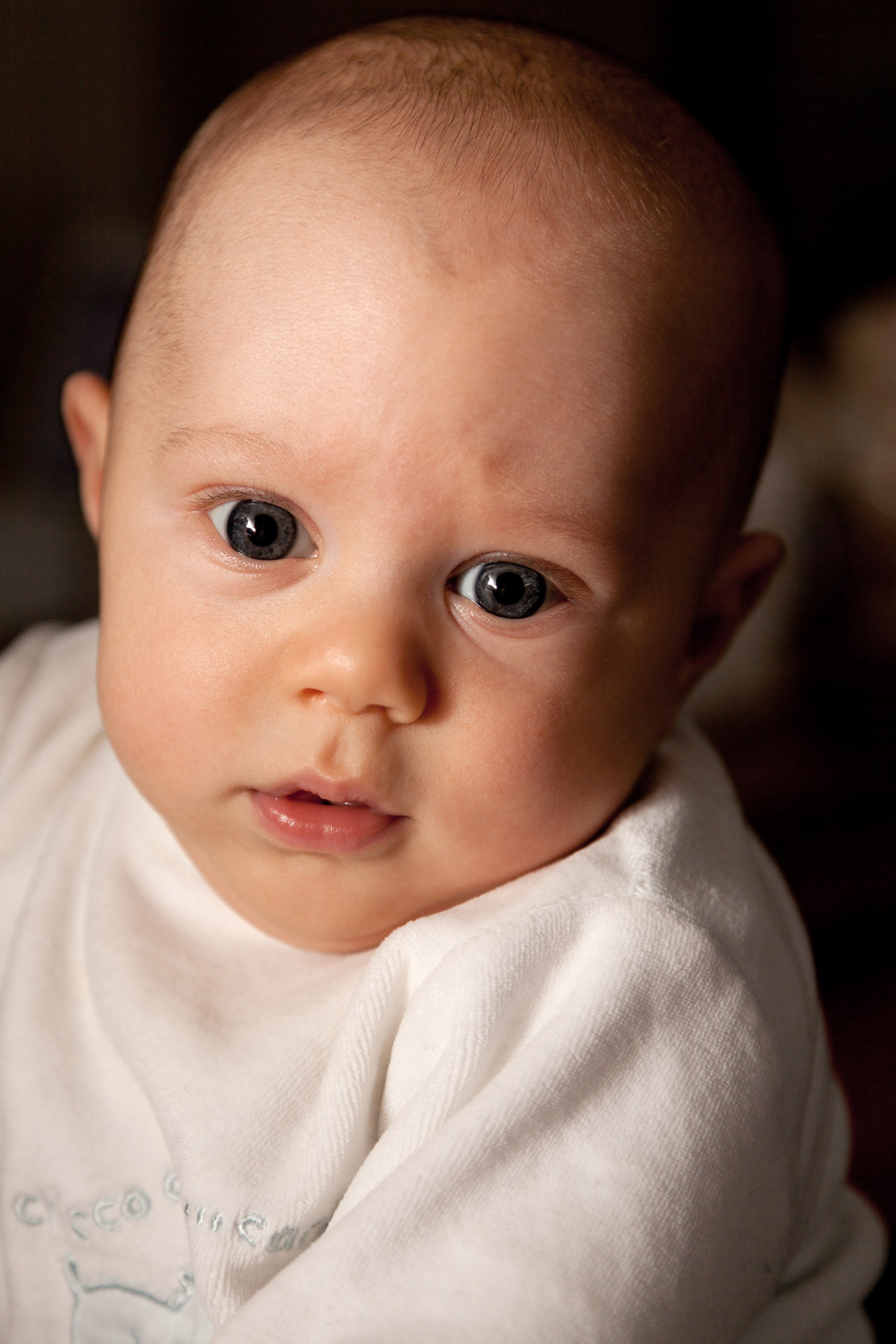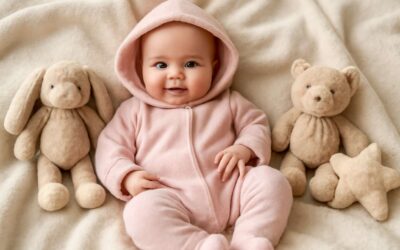Understanding Baby Clothing for Room Temperature
Basics of Baby Skin Sensitivity – Why choosing the right clothing is essential
In the enchanting world of caring for our tiny explorers, understanding baby clothing for room temp is a vital step. Did you know that a baby’s delicate skin is up to 10 times more sensitive than adult skin? This makes choosing the right clothing not just a matter of comfort, but of critical health. The warmth and breathability of fabrics significantly influence a baby’s overall comfort, especially when the environment is perfectly temperate.
Babies thrive in a carefully balanced climate, prompting the need for clothing that adapts seamlessly to room temperature. Soft, natural fibres like organic cotton or bamboo are often preferred because they offer gentle, breathable layers without the risk of overheating. To ensure optimal comfort, consider the following:
- Lightweight layers that can be added or removed as needed
- Clothing that wicks moisture away from the skin
- Breathable fabrics that promote airflow and prevent overheating
By selecting appropriate baby clothing for room temp, caregivers not only nurture the physical comfort of their little ones but also safeguard their sensitive skin from irritation and overheating. Every tiny detail counts in creating a safe, cosy haven for your baby’s first adventures!
Ideal Room Temperatures for Babies – Maintaining a safe and comfortable environment
Ensuring a safe and cosy environment for your little one begins with understanding the ideal room temperature for baby clothing. Babies are especially sensitive to temperature fluctuations; their delicate skin and developing bodies require a stable climate to thrive. Typically, the perfect room temperature for babies falls between 16°C and 20°C (60°F to 68°F). This range helps prevent overheating and hypothermia, ensuring your baby remains comfortable throughout the day and night.
When selecting baby clothing for room temp, it’s vital to consider layers that can be easily adjusted. Lightweight, breathable fabrics like organic cotton or bamboo are ideal choices, allowing air to circulate and moisture to evaporate.
- Natural fibres promote airflow
- They wick moisture away from the skin
- Prevent overheating and skin irritation
These features help maintain the perfect balance, especially in environments where the temperature might fluctuate slightly.
Monitoring your baby’s behaviour—such as fussiness or sweating—can often be a reliable indicator that their clothing or environment needs adjusting. Knowing the nuances of baby clothing for room temp is essential for nurturing a safe, peaceful space where your baby can flourish in comfort and warmth.
Signs of Overheating or Coldness in Babies – How to tell if your baby is too hot or too cold
In the delicate dance of caring for a baby, understanding the subtle cues of temperature regulation can be a game changer. Babies, with their sensitive skin and rapidly developing immune systems, communicate their comfort—or discomfort—in ways that often go unnoticed. Recognising signs of overheating or coldness is essential, especially when choosing the right baby clothing for room temp. A seemingly tiny change, like a slight fussiness or a damp neck, can signal that your baby’s environment or clothing needs adjustment.
To gauge whether your little one is too hot or too cold, a gentle touch on their neck, back, or tummy provides valuable clues. If the skin feels sweaty or the baby appears flushed, it’s a sign they might be overheating. Conversely, cold hands and feet, or a pale complexion, could indicate they’re too cold. In such cases, adding or removing layers becomes crucial. Remember, babies tend to be most comfortable when their core temperature stays within a narrow range—making the choice of appropriate baby clothing for room temp essential to their well-being.
Monitoring the signs of overheating or coldness isn’t just about comfort; it’s about safeguarding their health. By paying close attention to these behavioural cues, parents can ensure their baby remains cosy without risking overheating or hypothermia. The right baby clothing for room temp acts as a silent guardian, supporting your instinct and ensuring your baby’s environment remains perfectly balanced—warm, breathable, and safe at all times.
Choosing the Right Fabric for Room Temp Baby Clothing
Breathable and Natural Fabrics – Cotton, bamboo, and linen advantages
Choosing the right fabric for baby clothing for room temp is a decision that can significantly influence your little one’s comfort and well-being. Breathable and natural fabrics are often the unsung heroes in this delicate balance. Cotton, bamboo, and linen stand out as top contenders, each offering unique advantages tailored to the needs of sensitive skin and fluctuating temperatures.
Cotton, with its soft fibres and excellent breathability, remains a favourite among parents. It allows air to circulate freely, preventing overheating during warmer nights or chilly days. Bamboo fabric, on the other hand, is renowned for its silky smooth texture and moisture-wicking properties, making it ideal for maintaining a steady, comfortable body temperature. Linen, celebrated for its durability and cooling effect, provides an airy feel that keeps your baby fresh in room temperatures that hover between warm and cool.
Incorporating these fabrics into baby clothing for room temp not only ensures your baby stays comfortable but also reduces the risk of skin irritation, creating a safe environment for restful sleep and carefree play.
Fabrics to Avoid – Synthetic materials and their drawbacks
In the intricate dance of nurturing a newborn, selecting the right fabric for baby clothing for room temp becomes more than mere preference; it transforms into a vital act of safeguarding delicate skin and ensuring comfort. Synthetic materials, often marketed for their durability and affordability, mask a silent menace—comprising polyester, nylon, and acrylic—that can trap heat and moisture, creating an environment ripe for irritation and discomfort. Their propensity to generate static and inhibit breathability can lead to subtle yet persistent signs of overheating, disrupting restful sleep and undermining a baby’s natural ability to regulate temperature.

Fabrics like cotton, bamboo, and linen transcend these shortcomings with their natural properties. Synthetic fibres tend to be hydrophobic, meaning they repel moisture rather than wick it away, exacerbating discomfort in fluctuating room temperatures. For baby clothing for room temp, it’s imperative to avoid such synthetic fabrics, as they can intensify the risk of skin irritation and heat rash, especially when the environment shifts unexpectedly. Instead, prioritising breathable, natural textiles fosters a climate of safety and serenity, nurturing a space where your baby can thrive without the constant worry of overheating or cold stress.
- Polyester
- Nylon
- Acrylic
Fabric Maintenance and Safety – Durability, washing, and hypoallergenic options
Choosing the right fabric for baby clothing for room temp is an act of delicate artistry—balancing softness with resilience, breathability with durability. Natural fibres like organic cotton and bamboo not only provide a gentle embrace against tender skin but also stand the test of countless washes, maintaining their lush texture over time. These fabrics are inherently hypoallergenic, reducing the risk of irritation and offering peace of mind to parents concerned with sensitive skin.
When considering fabric maintenance and safety, durability becomes paramount. Baby clothing for room temp should withstand frequent laundering without losing shape or colour. Fabrics such as organic cotton and linen are marvels of natural engineering—easy to care for and ever-resilient. To ensure safety, always opt for clothing with minimal embellishments and secure fastenings, reducing choking hazards and preventing discomfort during restful sleep.
- Prioritise breathable, natural textiles that promote airflow and regulate temperature.
- Choose fabrics that are easy to wash, fade-resistant, and maintain softness over multiple cycles.
- Seek hypoallergenic options to minimise skin sensitivities and reactions.
When selecting baby clothing for room temp, it’s essential to marry practicality with an understanding of fabric integrity. The right textile not only nurtures your baby’s skin but also offers peace of mind, knowing that their comfort and safety are woven into every thread.
Recommended Clothing Types for Temperate Indoor Environments
Layering Strategies – How to dress your baby in layers
Optimal baby clothing for room temp strikes a delicate balance—neither too hot nor too cold. Layering becomes a practical approach, allowing caregivers to adapt swiftly to fluctuating indoor conditions. When dressing your baby for temperate environments, think in terms of versatile layers that can be added or removed as needed. This strategy not only ensures comfort but also reduces the risk of overheating or chills.
For room temp, a simple yet effective layering system might include a breathable onesie or bodysuit as the base, topped with a lightweight sweater or cardigan. If the environment tends to fluctuate, consider using a sleep sack or wearable blanket to provide a safe, adjustable layer. Remember, a baby’s skin is sensitive, so choosing fabrics that are breathable and natural—like cotton or bamboo—is essential. Incorporate items like soft, washable layers that maintain warmth without trapping excess heat, ensuring your little one remains comfortable regardless of minor temperature shifts.
All-in-One Outfits – Ease of dressing and comfort
When it comes to baby clothing for room temp, simplicity often reigns supreme. All-in-one outfits are a marvel of practicality, effortlessly combining comfort and ease of dressing. Imagine a soft, cosy romper that encapsulates warmth without excess bulk, making it perfect for a temperate indoor environment. These one-piece wonders eliminate the fuss of matching multiple layers and reduce the risk of accidental exposure or removal at inconvenient moments.
For parents seeking versatility, choosing all-in-one outfits crafted from breathable fabrics like cotton or bamboo ensures your little one remains comfortably regulated. They glide easily over delicate skin, offering a snug fit that adapts to minor temperature variations. Some designs incorporate gentle zippers or snaps, transforming dressing into a swift, almost magical experience, especially during those hurried mornings or sleepy evenings.
In environments where the temperature is stable and moderate, these garments offer a safe, stylish solution—embracing comfort, simplicity, and the wonder of fuss-free dressing. The right baby clothing for room temp isn’t just about clothing; it’s about creating a nurturing space where your baby can flourish, wrapped in softness and practicality.
Sleepwear Options – Choosing pajamas for room temperature
When it comes to baby clothing for room temp, sleepwear choices can make all the difference between a contented nap and a cranky ordeal. Babies are notorious for their fluctuating comfort levels, so selecting the right baby sleepwear isn’t just about fashion; it’s about safeguarding their delicate skin and ensuring a restful sleep. In temperate indoor environments, lightweight options that breathe and regulate temperature are ideal, preventing your little one from waking up sweaty or shivering.
Opt for baby sleepwear crafted from natural fabrics like cotton or bamboo, which are renowned for their breathability and moisture-wicking properties. Such fabrics help maintain a stable microclimate around your baby, avoiding the extremes of overheating or feeling chilly. For added versatility, consider sleepwear with subtle design features—like gentle zippers or snaps—that make dressing and changing hassle-free. After all, no parent has ever sighed with relief over complicated fastenings in the middle of the night.
In the quest for comfortable baby clothing for room temp, choosing the right sleepwear often means prioritising simplicity. A soft, breathable sleepsuit can be the perfect solution—whether it’s a cosy footed romper or a two-piece set that can be layered if needed. Remember, the goal isn’t just to keep your baby warm but to create a snug, safe environment conducive to peaceful slumber. Because when your baby sleeps soundly, everyone wins!
Accessories – Hats, socks, and swaddles suitable for indoor comfort
In the gentle embrace of a temperate indoor environment, selecting the right accessories for your baby transforms a simple nursery into a sanctuary of comfort. Hats, socks, and swaddles are not just cute additions—they are vital components of the perfect baby clothing for room temp. These items help regulate your little one’s microclimate, ensuring they remain cosy without overheating or shivering.
Opt for soft, breathable fabrics like organic cotton or bamboo for accessories, as these materials wick away moisture and promote airflow. A lightweight hat can shield your baby’s delicate skin from drafts, while snug socks keep tiny toes warm during those tranquil naps. Swaddles made from natural fibres allow flexibility, offering warmth without excess bulk—ideal for maintaining an optimal room temperature and fostering peaceful sleep.
When choosing baby clothing for room temp, consider versatile accessories that can be easily added or removed, depending on your baby’s comfort. An excellent way to achieve this is with a selection of layered items or adjustable fastenings. It’s these thoughtful details that turn a nursery into a haven, where your baby’s comfort is nurtured with each gentle touch and carefully chosen piece.

Seasonal Adjustments for Baby Clothing Indoors
Adjusting Clothing for Different Seasons – Summer vs. winter considerations
In the shadowed quiet of the seasons’ perpetual dance, the art of dressing a baby for room temp becomes a delicate ballet, a whisper of fabric against tender skin. As winter’s icy breath seeps into the corners of the home or summer’s relentless sun bathes the walls in heat, the need to adjust baby clothing for room temp takes centre stage.
During colder months, layering becomes a ritual of safety and comfort. A snug bodysuit beneath a cosy fleece jumpsuit, paired with soft socks and a gentle hat, creates a shield against the chilling air. Conversely, in the heat of summer, lighter fabrics like cotton and linen breathe life into baby clothing for room temp, preventing overheating and ensuring a cocoon of breathable comfort.
In this perpetual balancing act, understanding the subtle cues of your infant’s comfort is paramount—never underestimate the power of natural fabrics to whisper secrets of temperature regulation. The choice of clothing must be as fluid as the seasons themselves—an intricate interplay of fabric, form, and instinct.
Climate Control Tips – Using thermostats, fans, and heaters
In the silent symphony of indoor climate, where thermostats hum softly and fans whisper gentle currents, the art of dressing a baby for room temp becomes an exercise in delicate harmony. Nearly 80% of parents find maintaining optimal indoor conditions a challenge, yet it’s this subtle environment that shapes the comfort of baby clothing for room temp. When the air feels just right—neither a breath of winter’s chill nor summer’s heat—the right climate control can transform a nursery into a haven of serenity.
Temperature regulation through thoughtful use of heaters, fans, and thermostats can work in tandem with the choice of breathable fabrics, ensuring your little one remains cosy yet ventilated. For example, a carefully set thermostat can maintain a steady 20-22°C, allowing you to select baby clothing for room temp that’s neither too heavy nor too sparse. When temperatures dip, layering with soft fleece or wool blankets, combined with snug baby clothing for room temp, creates a shield of warmth. Conversely, during warmer days, ventilating the space with ceiling fans and opting for lightweight, natural fabrics like cotton or linen helps prevent overheating, keeping your baby comfortable and safe.
- Adjust thermostats to keep the room within a safe temperature range.
- Use fans judiciously to circulate air without creating drafts.
- Employ heaters with a thermostat setting to prevent overheating.
Ultimately, the key lies in observing your infant’s cues—restlessness, flushed cheeks, or clammy skin signal the need for a clothing adjustment or climate tweak. The dance of indoor climate control and baby clothing for room temp is an ongoing ballet, where intuition and technology entwine to craft an environment that nurtures and protects in perfect balance.
Monitoring Indoor Humidity – Keeping air comfortable for your baby
As the seasons swirl in their eternal dance, the indoor sanctuary where your baby rests must adapt like a gentle chameleon. Monitoring indoor humidity becomes an act of quiet enchantment—too dry, and your little one’s skin may crack like parched earth; too moist, and the air risks fostering discomfort or mould. Striking the perfect balance nurtures not only the delicate skin but also the ultimate comfort of your baby clothing for room temp.
During humid summer months, ensuring proper ventilation with ceiling fans and dehumidifiers keeps the air crisp and breathable. Conversely, in winter’s chill, adding a humidifier can prevent the air from becoming too arid, maintaining cosy air that complements your choice of baby clothing for room temp. To aid your journey, consider implementing a simple
- monitoring hygrometer
—a tiny sentinel that reveals the true nature of your nursery’s atmosphere. When humidity levels hover around 40-60%, your baby’s environment becomes a haven of gentle ease, allowing your baby clothing for room temp to work harmoniously with the room’s moisture content.
Remember, adjusting indoor humidity isn’t merely about comfort; it’s about safeguarding your infant’s health and skin. The subtle interplay between moisture, temperature, and the softness of natural fabrics creates an environment where your baby can flourish—wrapped in the perfect baby clothing for room temp, safe from the extremes of climate’s embrace. It’s this delicate balance that transforms a nursery from mere space into a cradle of serenity and well-being.

Additional Tips for Ensuring Baby Comfort at Room Temperature
Proper Clothing Sizing – Ensuring a snug but comfortable fit
When it comes to selecting baby clothing for room temp, precision in sizing becomes paramount—like tailoring a delicate symphony where every note must resonate in harmony. A snug yet comfortable fit ensures that your little one is neither constricted nor left exposed, fostering a sanctuary of warmth and breathability. The art lies in choosing garments that embrace the body gently, avoiding excess fabric that can cause overheating or loose layers that invite cold spots.
To achieve this delicate balance, consider the importance of proper clothing sizing—each piece should contour softly around your baby’s form, allowing for natural movement without restricting circulation. Think of it as dressing a cherished doll; too tight, and discomfort ensues; too loose, and the chill seeps in. An ideal approach involves selecting baby clothing for room temp that adapts seamlessly to your baby’s growth, ensuring ongoing comfort as they explore their world.
In addition, layering strategies can be employed with finesse—think of layering as creating a personalised climate control system, where each layer contributes to maintaining the perfect microclimate. Incorporating breathable fabrics and snug, well-fitting garments helps prevent overheating while safeguarding against the cold. When dressing your baby for room temperature, the goal is to craft a cocoon of comfort—an environment where they can dream peacefully, unburdened by the worries of temperature fluctuations.
Regular Temperature Checks – Using thermometers and observation
Maintaining the perfect microclimate for your baby requires more than just selecting the right baby clothing for room temp—it demands vigilant attention to detail. Regular temperature checks are the silent guardians of your little one’s comfort, acting as a lighthouse guiding your choices through the fog of uncertainty. Using a reliable thermometer, you can gauge the ambient warmth, ensuring it stays within the optimal range—neither a sweltering inferno nor a frosty cave.
Observation is equally vital; watch for subtle cues—fidgeting, flushing cheeks, or clammy palms—that whisper signals of discomfort. A simple practice involves feeling the baby’s nape or back—if these areas are damp or overly warm to touch, adjustments are necessary. For peace of mind, consider establishing a routine where you check the temperature at different times of day, especially during seasonal transitions when fluctuations are most unpredictable. This attentive vigilance transforms the nursery into a haven, where every stitch of baby clothing for room temp is part of a symphony of gentle regulation, ensuring your baby’s comfort is both instinctual and precise.
Emergency Measures – What to do if your baby shows signs of discomfort
Even the most vigilant parent can find themselves caught off guard when a baby suddenly exhibits signs of distress. In moments where discomfort becomes evident—flushed cheeks, clammy skin, or restless fidgeting—swift, deliberate action can be the difference between a restful night and a restless ordeal. Emergency measures are less about panic and more about calm, calculated intervention. Gently removing excess clothing or adjusting the room’s climate controls can immediately alleviate overheating or chilliness. It’s vital to trust your instincts—your baby’s subtle cues are often the most honest indicators of their comfort.
In scenarios where discomfort persists, consider employing a few strategic steps. For instance, if your baby shows signs of overheating, removing a layer of baby clothing for room temp and increasing ventilation might be necessary. Conversely, if they seem cold, adding an extra layer or using a soft, breathable blanket can restore warmth without risking overheating. Remember, maintaining a balance is crucial—overdressing or underdressing can exacerbate discomfort. Keeping a close eye on the environment, combined with quick adjustments, ensures that your nursery remains a sanctuary of safety and serenity.
To facilitate rapid response, it’s helpful to have a small kit nearby containing extra baby clothing for room temp, a fan, and a thermometer. Sometimes, the simplest measures—like repositioning your baby or adjusting the ambient temperature—are the most effective. When in doubt, prioritising gentle, natural fabrics and avoiding synthetic materials can prevent further aggravation of skin sensitivities. Ultimately, understanding your baby’s unique responses and acting with compassionate immediacy transforms moments of distress into opportunities for reassurance and comfort.
Choosing Quality Baby Clothing Brands for Room Temp Comfort
Trusted Brands and Certifications – Ensuring safety and quality
Choosing the right baby clothing for room temp is akin to selecting a protective cloak for a delicate fairy in a woodland realm. Trustworthy brands that prioritise safety and quality transform this task into a magical experience, ensuring your little one’s comfort amidst the ever-changing whispers of indoor climates. When seeking the best, look for trusted brands renowned for adhering to rigorous certification standards; these symbols of quality act as enchanted seals that guarantee fabric safety and durability.
Opting for reputable labels not only offers peace of mind but also provides access to certified hypoallergenic materials—crucial for sensitive baby skin. Brands that specialise in baby clothing for room temp often boast eco-friendly credentials and transparent manufacturing processes, weaving safety and sustainability into every fibre.
In this enchanted market, a simple yet vital rule applies: invest in quality. It ensures your baby’s comfort and safety, turning the mundane act of dressing into a nurturing ritual. Seek out brands that champion natural fabrics, backed by certifications, to create an environment where your tiny explorer can thrive peacefully.
Eco-Friendly and Sustainable Options – Benefits for baby and environment
Choosing quality baby clothing brands for room temp comfort is an exercise in both prudence and enchantment. When selecting baby clothing for room temp, prioritising eco-friendly and sustainable options not only benefits your little one’s delicate skin but also champions the health of our planet. Natural fabrics like organic cotton, bamboo, and linen are intrinsic to this endeavour—they breathe, regulate temperature, and reduce the risk of irritation.
Opting for brands that champion sustainability often means investing in garments crafted with care, transparency, and rigorous certification standards. These labels weave eco-consciousness into every fibre, turning dressing your baby into a ritual of nurturing and responsibility.
- Certified hypoallergenic materials
- Organic, eco-friendly fabrics
- Transparent manufacturing processes
In the grand tapestry of parenthood, choosing the right baby clothing for room temp is a subtle act of love—one that honours both your child’s comfort and the environment’s integrity.
Cost-Effective Choices – Balancing quality and affordability
Finding the perfect balance between quality and affordability when choosing baby clothing for room temp is a nuanced art. While it’s tempting to prioritize lower costs, investing in durable, well-crafted garments ensures your little one stays comfortable without the need for frequent replacements. Trusted brands that focus on transparent manufacturing processes often offer more reliable options, giving peace of mind that every piece is both safe and sustainable.
Opting for cost-effective choices doesn’t mean compromising on safety or comfort. Look for versatile pieces that can be layered or adapted as the temperature fluctuates. A thoughtfully curated wardrobe of baby clothing for room temp can be both economical and nurturing—proving that caring for your baby’s comfort and your budget can coexist beautifully. Ultimately, quality should be a priority, but smart shopping can make this goal achievable without stretching finances too thin.



0 Comments